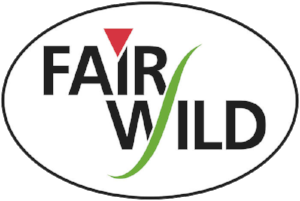Meet the hidden wild plants in your daily routines
In a world dominated by technology, sprawling cities and the latest gadgetry, it often feels as though our connection to the wild has all but disappeared. But perhaps not as much as we might fear …
This FairWild Week, we’ll show you how the treasures of the natural world are actually closer to home than you think. Connecting to the wild doesn’t just have to be about visiting a rainforest in Borneo, or seeing a Snow Leopard in Nepal; the world’s wilderness might actually be sitting in a teabag in your cupboard, or inside the lipstick in your handbag.
Follow us this FairWild Week 2018 and you’ll see how the wild is actually all around you and desperate to be given the recognition and protection it deserves.
WHAT’S THE DEAL WITH WILD PLANTS?
We humans are utterly dependant on plants for our survival, as food, medicines, fuel, building materials, clothing, and host of other products we use on the daily basis. Around 30,000 different plant species are used for medicinal and aromatic purposes.
That box of chocolate-covered brazil nuts you snack on at work–the brazil nuts came from wild trees in a South American rainforest, and the chocolate probably contained shea butter, from nuts harvested from a West African savannah tree.
Maybe you settle down for a soothing herbal tea before bed, often containing hawthorn, licorice, nettles or elder–all harvested from the wild. Next time you unwind with something a little stronger like a glass of G&T, remember that many juniper berries used in the gin distillation process are harvested from the wild.
There are hundreds of examples of how everyday products we consume contain wild plant ingredients. The estimates are that between 60 and 90% of medicinal and aromatic plants in trade around the world are wild collected.
The problem is, we usually have no idea that we’re consuming them and even if we do, whether they’ve been sustainably harvested.
Latest analysis by the IUCN SSC Medicinal Plant Specialist Group found that only ~7% of the medicinal and aromatic plants with well-documented uses have been assessed against extinction threat criteria (IUCN Red List). Of these, 20% are currently classified as threatened with extinction in the wild, and with increasing harvesting and consumption, the number of those being traded beyond sustainable levels is sure to rise even further.
It’s very difficult to know exactly how many wild plants are being harvested, traded, or consumed globally. But we do know that the volumes involved are huge.
Information from Customs records reveals that the value of global trade in medicinal or aromatic plants has increased threefold in a little under 20 years, and was valued at US$3 billion in 2015. In the same year, Germany–the largest trader in the European Union–alone imported US$250 million worth of medicinal and aromatic plants. China, Hong Kong SAR, USA, Germany, Japan and China were the top importers, while China, India, Canada, Germany and USA–top exporters of these plants by value.
There are no accurate estimates of the changing market demand for wild-harvested plant products, but the business sectors that rely on them (e.g. natural fragrances, herbal supplements, essential oils) document fast current and projected growth, adding further pressure on plant populations, and people that depend on this trade.
RIGHT, SO NOW WHAT?
Download the TRAFFIC report Wild at Home: An overview into the global harvest and trade in wild plant ingredientsFairWild Week is all about celebrating wild plants and the amazing things they do for harvesting communities, international businesses and consumers alike. But it’s also about encouraging industry to commit to sustainability frameworks and meaningful transparency and traceability.
There is a woeful lack of knowledge about wild plants in trade, both in the consumer and business world. So the first step to ensure that we continue to enjoy the many benefits of wild plants is to know what species we’re using and where—and to make sure they’re being sustainably harvested.
The FairWild Standard is a fantastic way for companies to ensure they wild plant ingredients in their products are sustainably and ethically collected, and for consumers to be sure that they’re buying from brands that protect the natural world and the communities who rely on it.
During #FairWildWeek, we’ll be explaining how the world of wild plants could be so much more sustainable, and telling you success stories straight from the field. We’ll also show you how you can take steps to reconnect to the wild through the products you use.
Are you a business? Click here to find out more.
Everyday consumer, or interested party? Find out more here!
Check out the world of FairWild on our social accounts @FairWild

